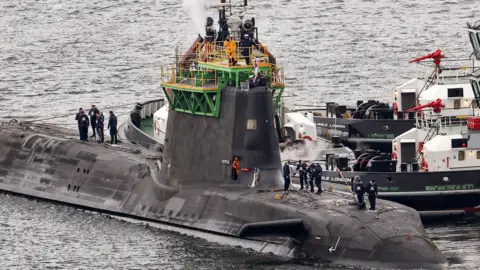Ongoing discussions about NATO defense spending targets have captured significant attention recently, as the United Kingdom finds itself under mounting pressure from its allies to increase military investments. The ever-evolving dynamics within NATO have led to an urgent call for member nations to review their financial commitments toward collective defense strategies. According to a recent announcement from Downing Street, dialogues are currently in progress regarding the necessary adjustments to the UK’s defense budget, emphasizing a collective stance on national security amid increasing geopolitical tension.
The UK government has outlined plans to enhance military spending from its current level of 2.3% of national income to 2.5% by 2027, with an ambitious goal to ultimately reach 3% by 2034. This increment in spending is expected to bolster the UK’s military capabilities, aligning with a strategic review of defense unveiled on Monday. Central to this review is the notion of achieving “war-fighting readiness,” a concerted effort to prepare for any potential military engagements.
However, NATO Secretary-General Mark Rutte is advocating for an even steeper commitment among NATO members, suggesting that they aim for a minimum of 5% allocation to defense-related expenditures during the upcoming summit scheduled for June. This proposal comes amid broader discussions about the funding needed to align with strategic threats and operational readiness, as well as responding to calls from various member nations to enhance their defense budgets.
Further intensifying these discussions, Prime Minister of the Netherlands, Dick Schoof, highlighted Rutte’s expectations that NATO’s 32 member states should target spending levels of 3.5% on hard military defenses and 1.5% on broader security aspects, such as cybersecurity, by 2032. Several eastern European and Nordic countries have already expressed intentions to raise their defense budgets in light of the upcoming summit, signaling a collective shift towards increased military spending across the Alliance.
On the global stage, the issue of NATO spending has also garnered attention from the United States, where President Donald Trump has consistently demanded higher financial contributions from NATO allies. With the summit in the Netherlands scheduled for June 24, the pressure on the UK and other NATO members to meet Rutte’s ambitious spending goals has become apparent. In this context, a spokesperson for Prime Minister Sir Keir Starmer stated the UK’s commitment to NATO remains steadfast, emphasizing that the UK is already the third highest contributor in monetary terms to the Alliance.
The defense review conducted by the UK government asserts a NATO-first approach, critically addressing the ongoing debates regarding the timeline for meeting the target of 3%. The Labour government expresses ambition to reach this goal by 2034 at the latest, aligning it with future general elections. Conversely, the Conservatives, along with reformist parties in the UK, assert that this increase should occur before the end of the decade, igniting a spirited political debate on defense policy and budget allocations.
Recent assessments from the Office for Budget Responsibility (OBR) suggest that fulfilling the 3% target by 2030 would necessitate an additional £17.3 billion from the UK government. This reality brings forth discussions surrounding potential cuts to other budgetary allocations, including foreign aid, to prioritize military enhancements.
During an interview with the BBC, Sir Keir refrained from providing a specific timeline for achieving the 3% target, stating that making such declarations without a clear funding strategy would resemble “performative fantasy politics.” Additionally, he acknowledged ongoing dialogues regarding financial contributions ahead of the imminent NATO conference.
Historically, discussions on collective military expenditures have intensified following Russia’s invasion of Ukraine in 2022, which catalyzed European nations to reevaluate their defense strategies. The British government’s renewed focus on military readiness and spending reflects a broader trend among NATO members, led by calls from leaders like Rutte and Schoof to redefine and expand financial commitments towards collective security in an increasingly uncertain global landscape.



